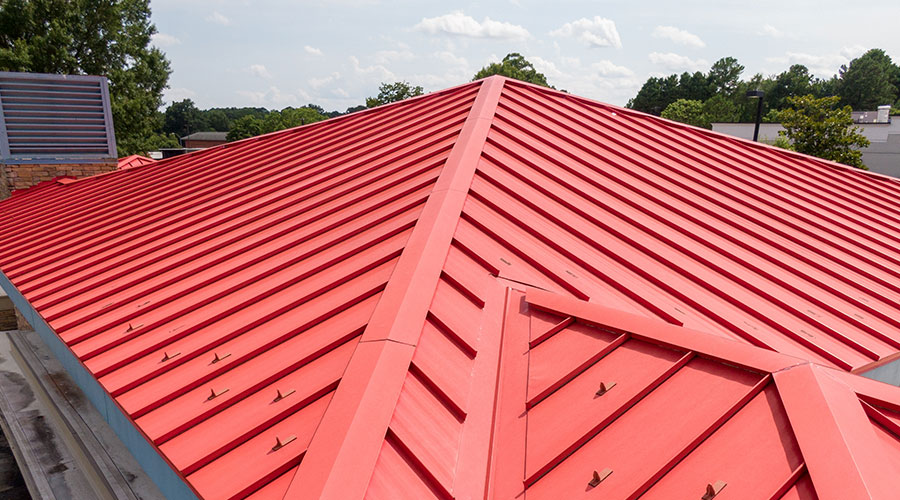Key topics for facility professionals. Keywords for this topic: Window film, solar window film
Compiled by FaciliesNet Staff
Solar heat gain through windows is responsible for roughly one third of a building's cooling load, according to the Department of Energy. That makes applying solar window film a logical step in reducing solar heat gain and improving the energy efficiency of a building.
Solar window film is applied to the inside of a window where it reflects and absorbs heat from sunlight. In addition to reducing the need for cooling, window film helps create an even, comfortable temperature throughout a building.
A building’s directional orientation relative to the sun can create “hot spots,” or areas that receive significantly more sunlight than others. Depending on the sophistication of a facility’s HVAC system, this can create challenges for maintaining occupant comfort.
How Solar Window Film Works
Solar control window film reduces heat gain by blocking solar radiation. Solar radiation, or solar energy, is made up of three components: ultraviolet radiation, visible light and near-infrared radiation. Near-infrared radiation makes up 53 percent of the solar spectrum, visible light 44 percent, and ultraviolet 3 percent. When rays from the sun hit a window, some of the energy is absorbed and some is reflected by the window, but most is transmitted through the glass.
According to the International Window Film Association (IWFA), a pane of clear glass reflects about 6 percent of solar radiation, absorbs 5 percent and transmits the remaining. When this energy enters a space and is combined with the ambient heat already present in a room — from people, computers and reradiated heat absorbed by furniture and carpeting — the excess heat can make an uncomfortable difference, particularly for people near windows.
Installing solar control window film increases the amount of solar energy both reflected and absorbed by the window. Most window films have a thin metallic coating, made up of aluminum, stainless steel, silver or a combination, that reflects and absorbs solar radiation. Of the radiation absorbed, most of it is reradiated outward, though some is radiated into the building.
The most important performance measurement of the heat rejection ability of solar control window film is the solar heat gain coefficient (SHGC), says Darrell Smith, executive director of the International Window Film Association. SHGC measures the total amount of solar energy transmitted into the room. This includes both solar energy directly transmitted through the glass and solar energy absorbed and radiated into the building by the film. The heat rejection ability of window film can be as high as 80 percent, says Smith. The amount of energy reflected and absorbed varies depending on the types and quantities of metals used in the film.
The near-infrared and visible light rejection capabilities of window films vary, and the combination that is best will be determined by the goals for the application, and what results are desired.
A reduction in solar heat gain can translate directly into fewer kwh used for cooling. What’s more, most utilities have a separate demand charge based on the highest monthly rate of electricity use for a year, or the peak demand. This charge is in addition to the regular cost of electricity. By reducing the amount of cooling needed during peak periods, demand charges can also be reduced.
What’s more, window film can improve occupant comfort as they save energy. Areas near windows are sometimes too warm because of the amount of heat coming in from sunlight. By reducing the solar heat gain, window films can make those perimeter areas more pleasant for people using the spaces.
Some utilities offer rebates and other incentives for installation of window film because of its ability to help save energy. A facility executives considering a window film installation should check with the local utility to see if incentives are available or planned.
Estimating Solar Window Film Savings
One note of caution to remember is that while window films can often save money, too often exaggerated or misleading claims are made as to the energy benefits of reflective film installation. The worst of these claims lead facility executives to believe that installation will reduce energy use by as much as 50 percent.
In reality, a well-planned and implemented window program will reduce the window’s contribution to the overall building load by 50 percent or more. For window film installations, the payback can be as short as five years. The reason the payback isn't faster is because the window’s contribution is only a part of the overall heating and air conditioning load for the building,
Because there are so many variables related to the specifics of the application, it is essential that facility executives have the energy impact of the project analyzed before committing to a replacement or upgrade project. Analyzing different options will also allow facility executives to select the windows that are best suited for their particular application. Failure to do so will result in unrealistic energy savings expectations.
Finding the Right Solar Window Film
Knowing the types of windows a facility has and the specific energy needs of the building will help to determine the best film. For example, for facilities that want to limit solar heat gain while letting in visible light, spectrally selective films are available that allow more visible light to be transmitted while still rejecting near-infrared radiation. Spectrally selective films have visible light transmission between 35 and 75 percent, says Smith. These types of films can work for buildings originally designed for daylighting.
Knowing the characteristics of a facility’s windows is also important to ensure that the film selected won’t damage the window. Smith says that manufacturers use film-to-glass tables as guides to what type of window film is best for a certain window.
Sources:
Window Film: A Window of Opportunity by Rachael Zimmermann







